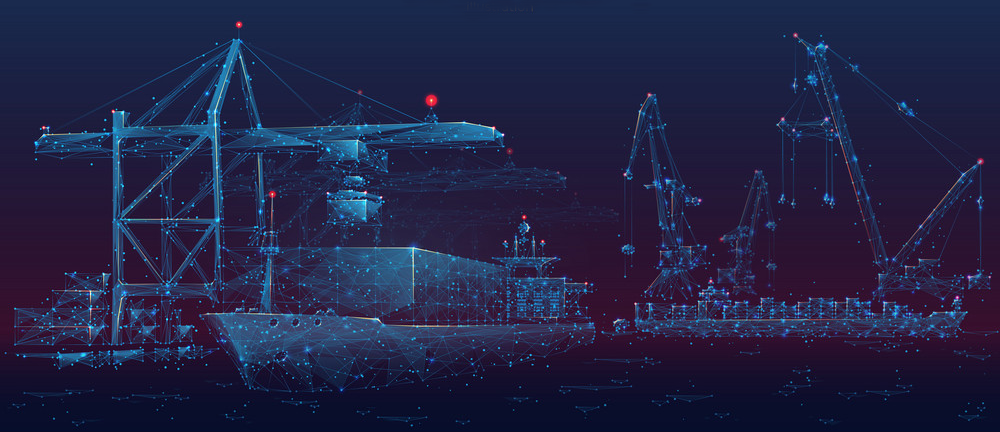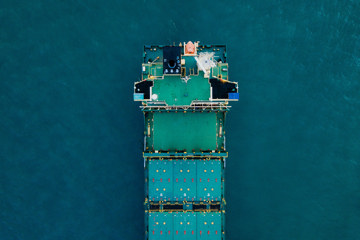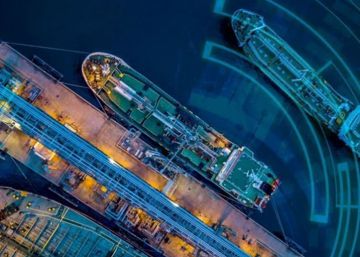
Letting digital technologies do the heavy lifting
Digitalisation is the key to efficiency, safety and success in the container vessels of tomorrow – and today
Terje Dyhre, VP Customer Success, Vessel Insight, Kongsberg Digital, is emphatic when discussing the increasingly central role digitalisation will play in the maritime industry in the immediate and long-term future. Digital strategies within this area have already proved discreetly transformative; it’s only by winding the clock back a few years that shipowners might see how far they’ve already come, thanks to digital products and services, in terms of instigating operational and administrative efficiencies.

“Everyone talks about digitalisation as something that is going to be happening in the future, but with the imminent adoption of greenhouse gas reduction initiatives such as IMO 2023 the future is coming up very quickly now. Shipowners are starting to see that more comprehensive and accurate vessel monitoring is needed for them to meet the requirements.”Terje Dyhre, VP Customer Success, Vessel Insight, Kongsberg Digital
Nevertheless, the pressure is very much on for every sector within the industry to ensure that they are making wise, far-sighted, cost-effective investments today which will still be paying dividends tomorrow. Kongsberg Maritime has been blazing the trail for digital technologies for many years now; and, having identified significant deficiencies in the cargo segment, has devoted a great deal of attention to the design of advanced container vessel concepts which include integrated digital solutions at their very core.
NEWBUILD CONTRACTS
If there’s one common thread that unites the world’s seaways, it’s that each one will inevitably be teeming with container ships at any one time. Trade, livelihoods and even lives depend upon them, so the need for a wholesale replacement of inefficient, dirty, outmoded and potentially unsafe assets with economical and environmentally-compliant cargo vessels as regulations and financial constraints continue to tighten couldn’t be more apparent.
The shocks caused by the pandemic resulted in kneejerk cuts to any expenditure seen to be surplus to immediate requirements, but this reaction – always unsustainable in the long term – seems now to have largely abated. “We’re now seeing a lot of newbuild contracting of container vessels,” says Carl Rustand, Vice President, Business Development & Strategic Partnerships, Kongsberg Maritime (KM). “In fact, we’ve seen more contracts in the first quarter of this year alone than last year in its entirety. The market is talking about a super-cycle in container vessel ordering.”
-
TEU feeder1985
-
TEU Panamax ship14985
-
TEU vessels23985
Meeting this anticipated surge head-on, KM’s concept brief for container vessels is broad in scope. Designs range from a 2,000 TEU feeder and 15,000 TEU Panamax ship all the way up to large 24,000 TEU vessels. The reassurance of full order books should not, however, be taken as an indication that the container sector is about to embark upon a reckless spending spree. The Covid outbreak proved beyond a shadow of a doubt how susceptible the maritime industry is to devastating impacts from random factors, so the overarching corporate approach can be expected to unfold along sober, rational lines. Keeping overheads to an absolute minimum tops the list of priorities, which is essentially focused on maximising operational efficiency while reducing costs. Undeniably, digital solutions for elements such as fuel, energy and vessel health management and optimisation, repair & maintenance scheduling, fleet monitoring and business organisation will be key to achieving this.
INARGUABLE BENEFITS
The job which KM now has on its hands is to demonstrate to the more non-committal shipowners that deploying integrated digital solutions from a single source will generate essential, inarguable benefits. Even within an industry which is wary of pivoting away from traditional, tried-and-tested working methods, the container sector has been comparatively sluggish at getting to grips with digitalisation and the future-proofing mindset it represents. Many container vessel fleet managers have been put off by the perceived complexity, expense and potential cyber-risk of trying to collate, analyse and leverage data from multiple sensors and sources supplied by different vendors: they may not even realise that a far more cohesive, cost-effective, standardised and secure digital strategy is staring them in the face.
KM’s straight-talking approach to maritime digitalisation seeks to dispel confusion and unease by basing a set of core principles upon five distinct but complementary pillars: Connected Products, Integrated Solutions, Vessel-to-Cloud Infrastructure, Digital Platform and Applications in the Marketplace. The first of these pillars, Connected Products, sits at the centre of the company’s digital ethos. The idea is to prioritise, simplify, standardise, integrate and enhance access to secure data from all onboard assets. To this end, KONGSBERG’s Vessel Insight service has been devised as a digital tool which is intended to provide users with a complete vessel-to-cloud data infrastructure, but with minimal outlay.
This service comes with a persuasive and proactive extra, as Terje Dyhre points out. “I work as a customer success manager for Vessel Insight,” he explains, “which means that KONGSBERG provides someone who will guide customers through the entire digital journey, showing them the opportunities available and the road map ahead. As long as a customer subscribes to Vessel Insight, he’ll have a dedicated success manager. You don’t just get some data in the cloud and then get told ‘good luck’: we really follow them through the entire process.”
Vessel Insight exemplifies the principles of pillars two and three – Integrated Solutions and Vessel-to-Cloud Infrastructure – which simultaneously set out to optimise stability and performance while minimising risk and enabling vessel data to be securely analysed, contextualised and stored. Importantly, it gives fleet owners full control, ownership of and access to their data.
Pillars four and five, meanwhile, relate to KDI’s Kognifai platform – an open digital ecosystem which is available to all Vessel Insight subscribers and which also provides customers with additional applications via the Kognifai Marketplace. Capable of hosting third-party products, the Marketplace is home to a broad variety of Kongsberg Digital and Kongsberg Maritime software solutions. These range from applications such as MarineInsight and Maress, which offer AI-based predictive maintenance and fleet energy management tools, to Vessel Performance and BOSS (Bluewater Optimum Speed Services), which leverage benchmarked historical performance data and dynamic speed scheduling for optimal efficiency and better-informed decision-making.
In every case and context, digital data is the common currency for achieving what KONGSBERG refers to as a Full Picture strategy. “There are also elements such as an Eco-Advisor,” Carl Rustand comments, “and these applications can all be basically interpreted as OPEX reduction initiatives as well as enabling vessels to meet forthcoming regulatory requirements.”
“Another substantial saving which digitalisation enables is that fewer service engineers are required on board,” adds Terje Dyhre. “Especially given the lockdown restrictions over the last year, a lot of container vessel owners have really had their eyes opened regarding the value, potential and commercial common sense of remote support. It’s very easy to weigh up the cost of deploying service engineers against two hours of remote support from head office.”
In many ways, the evolution of Kongsberg Maritime’s AutoChief remote control system for propulsion plants is representative of the way digitalisation has been stealthily transforming operational processes at sea. First introduced in 1967, AutoChief systems now feature digital capabilities which enable onshore teams to monitor engine operations while sensor inputs indicate, for example, the optimal speed and route profile, plus the vessel’s actual speed versus its ordered speed. Meanwhile, a Digital Governor System and Engine Safety System are both fully integrated and stand-alone components of AutoChief units.
“It’s constantly developing: every month there’s something new. It’s growing really fast, and container companies need to address this now if they are to remain competitive, compliant and relevant.”
For further information, please contact:

We’re here to help and answer any question you might have. Please get in touch and our expert team will answer all your questions. We look forward to hearing from you!LEIF KRISTIAN WEUM, Senior Sales Manager, Kongsberg Maritime

